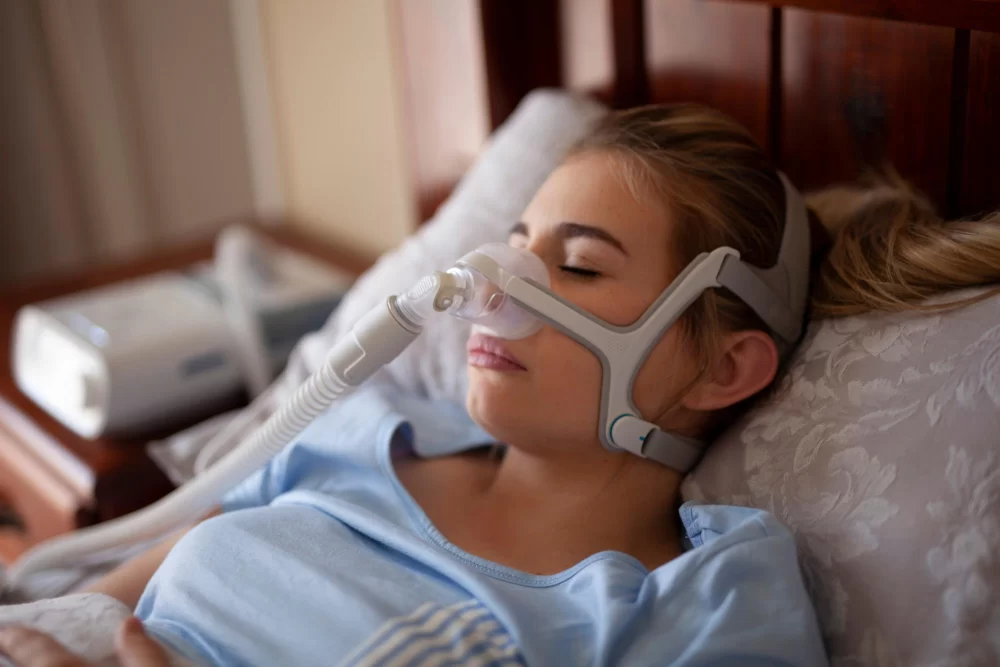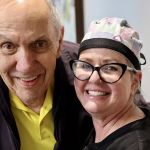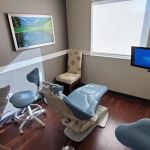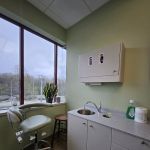
Effective Sleep Apnea Treatment for People with Sleep-Disordered Breathing
- Understanding Sleep Apnea and Its Causes
- Types of Sleep Apnea and How They Impact Health
- Treatment Options for Sleep Apnea
- CPAP Therapy for Sleep Apnea
- Lifestyle Changes to Support Sleep Apnea Treatment
- Real-Life Experiences with Sleep Apnea Treatment
- How to Start Your Journey with Sleep Apnea Treatment
1. Understanding Sleep Apnea and Its Causes
Sleep apnea is a sleep disorder where a person’s breathing repeatedly stops and starts during sleep. It affects millions of people worldwide and can have serious health consequences if left untreated. The primary causes of sleep apnea include obesity, anatomical abnormalities in the throat, and poor muscle tone in the airway. Sleep apnea is often characterized by loud snoring, choking, and gasping for air during sleep.
2. Types of Sleep Apnea and How They Impact Health
There are three main types of sleep apnea:
- Obstructive Sleep Apnea (OSA): The most common form, caused by a physical obstruction in the throat, such as relaxed throat muscles or excess tissue.
- Central Sleep Apnea: This type occurs when the brain fails to send proper signals to the muscles that control breathing.
- Complex Sleep Apnea: A combination of obstructive and central sleep apnea, sometimes referred to as treatment-emergent central sleep apnea.
Each type of sleep apnea can lead to poor sleep quality, resulting in daytime fatigue, cardiovascular issues, and decreased cognitive function. Over time, untreated sleep apnea increases the risk of high blood pressure, stroke, heart disease, and diabetes.
3. Treatment Options for Sleep Apnea
When it comes to treating sleep apnea, there are several options available, depending on the severity of the condition and individual health factors. The main treatment methods include:
- Continuous Positive Airway Pressure (CPAP): A CPAP machine is the most commonly prescribed treatment for obstructive sleep apnea. It uses a mask that delivers a constant stream of air, keeping the airway open during sleep.
- Oral Appliances: These devices are designed to reposition the lower jaw and tongue to prevent airway collapse, suitable for mild to moderate sleep apnea.
- Surgery: In cases of severe sleep apnea or when other treatments are ineffective, surgery may be necessary to remove excess tissue or correct anatomical issues in the airway.
- Positional Therapy: Some people with sleep apnea experience symptoms when sleeping on their back. Positional therapy involves using devices to encourage side-sleeping to reduce symptoms.
4. CPAP Therapy for Sleep Apnea
CPAP therapy is often considered the gold standard for treating obstructive sleep apnea. The device provides a continuous flow of air through a mask worn over the nose or mouth. This air pressure keeps the airway open, preventing the pauses in breathing that characterize sleep apnea. CPAP therapy can significantly improve sleep quality, reduce snoring, and prevent the long-term health complications associated with untreated sleep apnea.
While some people may initially find it uncomfortable, with time and the right adjustments, CPAP therapy can lead to improved energy levels, reduced daytime fatigue, and a better overall quality of life.
5. Lifestyle Changes to Support Sleep Apnea Treatment
In addition to medical treatments, lifestyle changes can play a significant role in managing sleep apnea. Some beneficial changes include:
- Weight Loss: For overweight individuals, losing weight can reduce the severity of sleep apnea by decreasing fatty tissue around the neck and throat.
- Avoiding Alcohol and Sedatives: Alcohol and sedatives relax the muscles of the airway, worsening sleep apnea symptoms.
- Exercise: Regular physical activity can improve overall health, reduce the risk of sleep apnea, and enhance the effectiveness of sleep apnea treatments.
- Sleeping on Your Side: For some, sleeping on the side can help prevent airway collapse, reducing sleep apnea symptoms.
6. Real-Life Experiences with Sleep Apnea Treatment
John, a 45-year-old man, had been living with untreated sleep apnea for years. He would wake up exhausted every morning, struggle with daytime fatigue, and even fell asleep at his desk. After his doctor diagnosed him with moderate obstructive sleep apnea, John began CPAP therapy. Within a week, he noticed a dramatic improvement in his energy levels and overall mood. Now, John enjoys better sleep and a much healthier lifestyle.
Stories like John’s are a testament to the effectiveness of sleep apnea treatments. With the right diagnosis and treatment plan, many people are able to reclaim their sleep and improve their overall health.
7. How to Start Your Journey with Sleep Apnea Treatment
If you suspect you have sleep apnea or have been diagnosed with sleep-disordered breathing, the first step is to consult a healthcare professional. They will assess your symptoms, perform necessary tests, and create a personalized treatment plan. Whether it’s CPAP therapy, oral appliances, or lifestyle changes, taking action early can improve your sleep quality and long-term health.
Don’t let sleep apnea control your life. Explore the available treatments and begin your journey toward better sleep today. With proper treatment, you can manage sleep apnea and enjoy a healthier, more restful life.







 NuSet Dental Implants and Oral Surgery of Scottsdale4.0 (20 review)
NuSet Dental Implants and Oral Surgery of Scottsdale4.0 (20 review) White Pine Dental4.0 (1076 review)
White Pine Dental4.0 (1076 review) Maple Drive Dentistry4.0 (207 review)
Maple Drive Dentistry4.0 (207 review) Dental Designs4.0 (352 review)
Dental Designs4.0 (352 review) David M. Wolf DDS, PC5.0 (298 review)
David M. Wolf DDS, PC5.0 (298 review) Lakeside Dental4.0 (251 review)
Lakeside Dental4.0 (251 review) The Importance of Oral Health Education During Pregnancy for a Healthy Pregnancy
The Importance of Oral Health Education During Pregnancy for a Healthy Pregnancy Best Tips for Brushing Your Teeth Properly for Healthy Gums: Essential Techniques for Oral Health
Best Tips for Brushing Your Teeth Properly for Healthy Gums: Essential Techniques for Oral Health Why Skipping Dental Checkups Can Lead to Bigger Oral Health Problems
Why Skipping Dental Checkups Can Lead to Bigger Oral Health Problems Advantages of Porcelain Dental Restorations
Advantages of Porcelain Dental Restorations How Can Diabetes Cause Tooth and Gum Problems? Preventing and Managing Oral Health Issues
How Can Diabetes Cause Tooth and Gum Problems? Preventing and Managing Oral Health Issues Healthy Habits for Promoting Good Oral Health and Hygiene: Tips for a Healthy Smile
Healthy Habits for Promoting Good Oral Health and Hygiene: Tips for a Healthy Smile